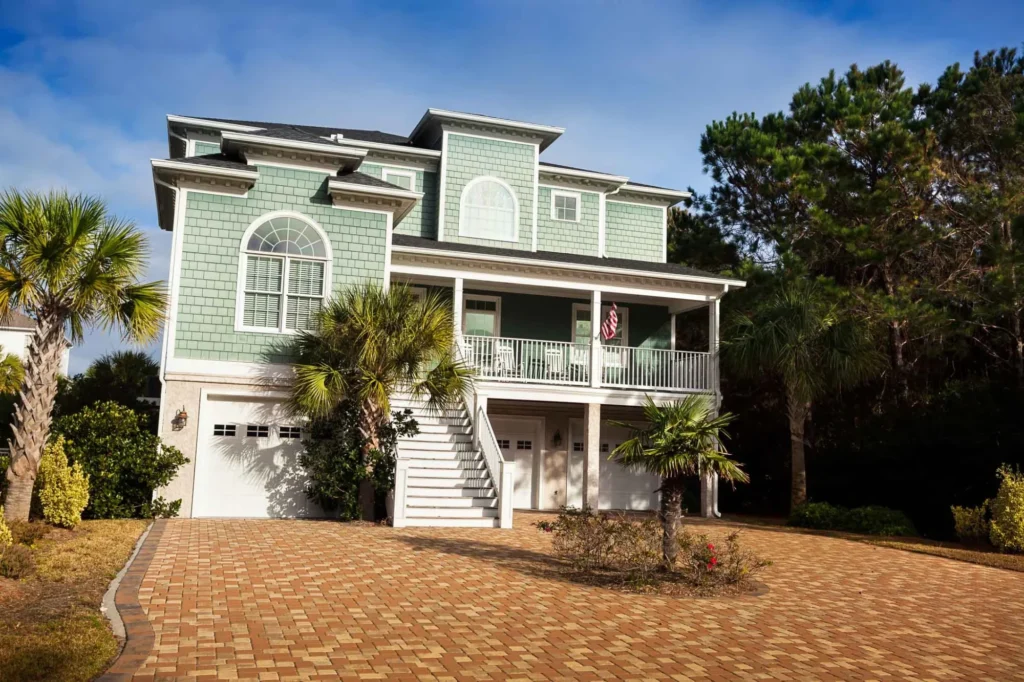
Scorpion Control and Prevention in Mt. Pleasant, SC
Scorpions are venomous arthropods that can cause serious concern when they start appearing in your living spaces. In Mt. Pleasant, SC, the blend of warm, humid weather, heavily landscaped neighborhoods, and elevated Lowcountry-style homes with ventilated crawl spaces creates perfect environments for scorpions to hide and thrive. From the shaded corners of Old Village to new developments along Highway 41 and the marshes near Shem Creek, there are countless sheltered microhabitats where scorpions can settle in. Because they spend daylight hours hidden deep inside cracks, voids, and shaded pockets, over-the-counter sprays rarely solve the issue. The most dependable way to protect your family is with a professional scorpion control plan that identifies every entry point, targets where scorpions actually live, and hardens your home against reinvasion.
At All U Need Pest Control, we specialize in scorpion control throughout Mt. Pleasant and the surrounding coastal communities. From Belle Hall and Park West to Brickyard Plantation, Dunes West, and Carolina Park, we know how different neighborhood layouts affect pest activity. We also serve residents near Shem Creek, the Patriots Point area, and along Highway 17 toward Awendaw and Isle of Palms. Since 2003, our team has delivered fast, long-lasting results with clear communication and a deep understanding of how Mt. Pleasant homes are built. We customize each plan for your property and landscape while always keeping your family and pets safe.
In the guide below, you’ll learn how scorpions become established in Mt. Pleasant, what effective scorpion control looks like in our community, and how All U Need Pest Control helps keep homes protected. If you need help right now, call 1 (888) 239-BUGS.
Pest Control Services in Mt. Pleasant, SC
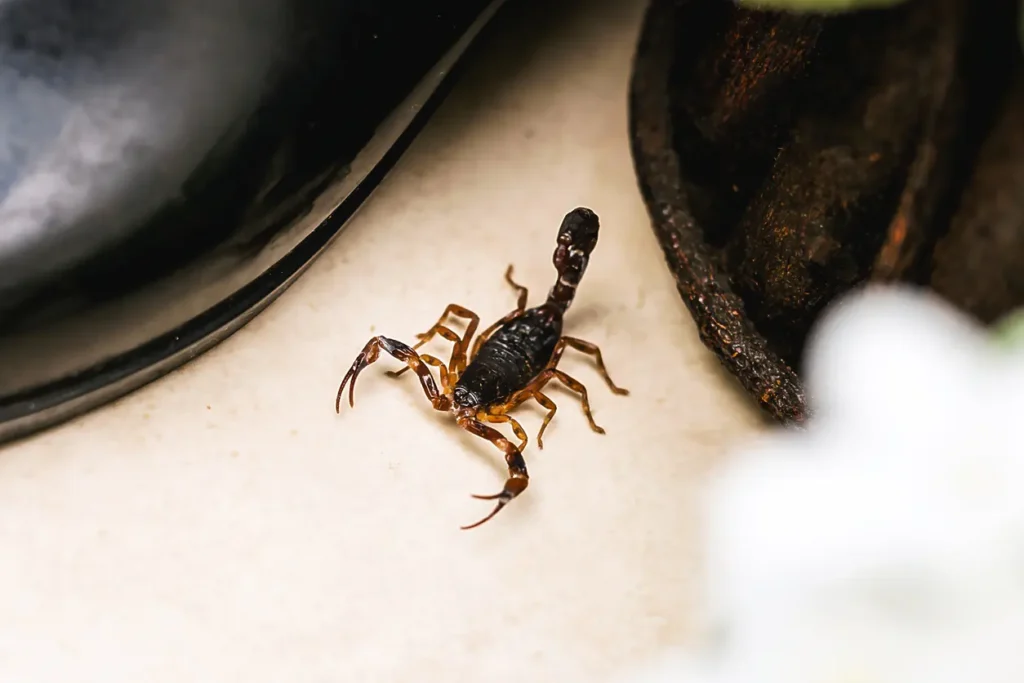
How to Get Rid of Scorpions in Mt. Pleasant, SC
The Southeast is home to several scorpion species. In Mt. Pleasant, the southern devil (unstriped) scorpion is the most likely to be encountered. However, other “hitchhiker” species can occasionally arrive via freight, landscaping materials, or travel. No matter the species, the solution is the same: inspect thoroughly, identify accurately, treat targeted harborage sites, and close up gaps in the building envelope.
- Inspection first. We identify where scorpions hide and travel—crawl-space entries, porch lattice, expansion joints, meter boxes, AC line gaps, attic and gable vents, and gaps around doors and windows.
- Clear identification. The species type and infestation level determine what treatments and exclusion steps are most effective. Correct ID helps avoid wasted applications.
- Targeted treatments. We apply professional-grade products directly into cracks, voids, and crevices, while also reducing the insect prey scorpions rely on.
- Exclusion and prevention. Once harborage areas are treated, we seal gaps, add door sweeps, screen vents, and suggest moisture and lighting changes that lower future pest pressure.
Because scorpions sting defensively, immediate action helps protect your family. Stings often cause localized pain and burning, but sensitive individuals may experience more serious symptoms. Seek medical attention if reactions are severe.
Inspection
Our process begins with a crawl-to-eave inspection. We check foundation cracks, crawl-space doors, porch steps, brick-pier joints, garage thresholds, and utility penetrations. We also look at attic and gable vents, soffit seams, and shaded landscaping areas such as ligustrum, jasmine, and azalea beds—common throughout Mt. Pleasant yards—where insect prey thrives. Inside, we inspect baseboards, closets, plumbing pass-throughs, and other tucked-away spots.
Identification
Accurate ID is critical. We confirm whether the activity is from southern devil scorpions, typical in the Charleston region, or a less common transported species. This shapes treatment product choice, placement, and follow-up schedules.
Targeted Treatments
We focus on precision applications. Our technicians apply professional products into cracks, crevices, and voids where scorpions shelter, never broad spraying across open surfaces. Desiccant dusts may also be used in dry voids, with discreet exterior applications along thresholds, foundation seams, and expansion joints.
Prevention
After the knockdown phase, we strengthen defenses by sealing utility entries, adding door sweeps, inserting breathable weep-hole covers, and screening attic and gable vents with pest-rated mesh. We also recommend trimming back heavy landscaping and adjusting exterior lighting near doorways to reduce insect draw.
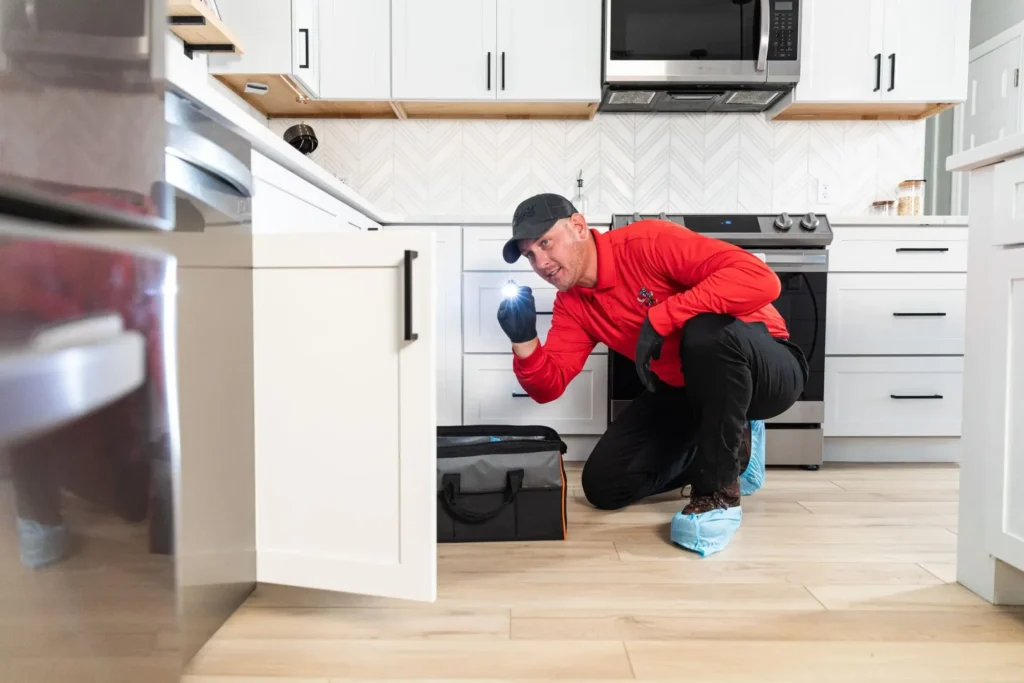
Scorpion Treatment in Mt. Pleasant, SC
Our program in Mt. Pleasant combines building science with Integrated Pest Management (IPM)—addressing moisture, food supply, and access points alongside targeted treatments.
Exclusion
Exclusion provides long-term relief. We seal cracks and voids with durable materials, reinforce crawl-space doors, and install breathable weep-hole inserts. Raised Lowcountry homes with latticework and wooden stairs—very common in Mt. Pleasant neighborhoods—are reinforced to cut off common access routes.
Habitat Modification
Scorpions follow prey and shelter. We reduce both by trimming back vegetation, pulling mulch and pine straw away from siding, elevating stored items, and improving drainage so soil dries quickly after rainstorms or high tides. A cleaner perimeter means fewer insects and fewer scorpions.
Natural Treatments
In sensitive areas, botanical-based repellents can discourage scouting, and desiccant dusts in voids provide long-term suppression. These approaches support—but do not replace—core treatments and exclusion.
Chemical Treatments
When infestations are moderate to high, we use low-odor, professional-grade products placed exactly where scorpions travel—expansion joints, slab seams, and thresholds—while keeping applications away from pollinator areas and open water. Indoor service is limited to cracks and crevices.
Integrated Pest Management
IPM means documenting and adjusting. We track placements, measure pressure over follow-ups, and calibrate strategies based on site conditions, weather, and your home’s architecture. The result is a staged plan that removes current populations and resists future ones.
- Inspect the property and structure for hiding and entry points.
- Treat using precise, family-safe applications.
- Exclude and maintain with seasonal checkups or light exterior treatments.
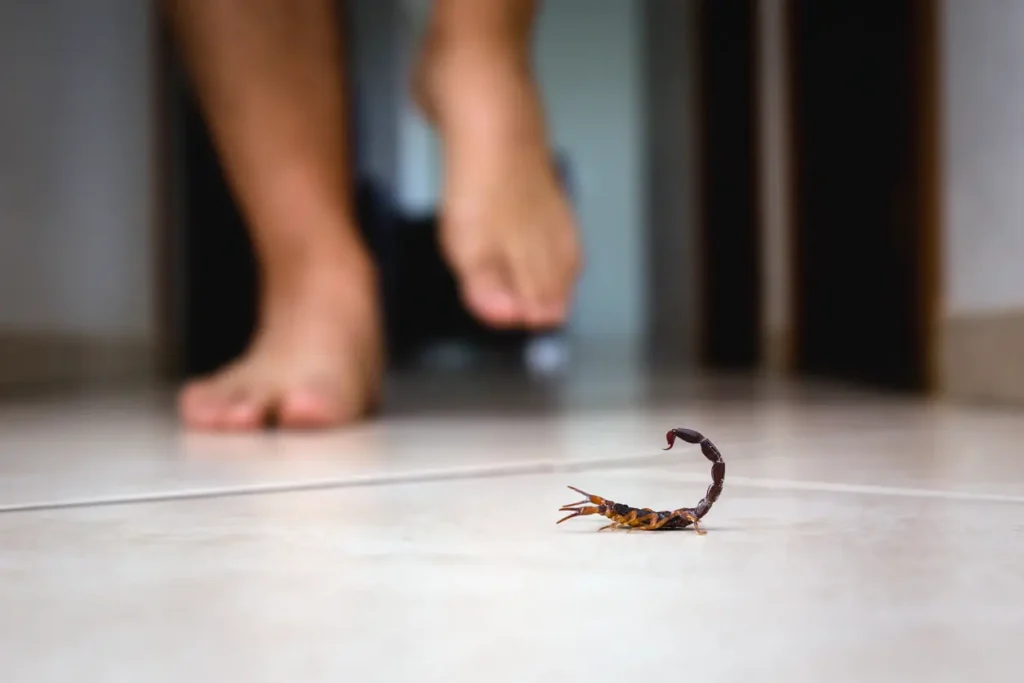
Signs of a Scorpion Infestation in Mt. Pleasant, SC
Early detection allows faster intervention.
Scorpion Sightings
In Mt. Pleasant, scorpions are often spotted at night along baseboards, inside bathrooms, or near garages and porches. Outdoors, they hide under planters, stacked lumber, pavers, or by AC pads and hose bibs.
- Crawl spaces and pier perimeters.
- Attics and soffit or gable areas.
- Under bathroom or kitchen cabinets where plumbing passes through.
- Beneath rocks, stacked wood, or patio pavers.
Scorpion Droppings
Small, dark droppings often appear near entry points or voids. Concentrated droppings in crawl spaces or garages are a red flag.
Shed Exoskeletons
Scorpions shed as they grow, leaving behind cast skins in corners or storage areas—clear signs of an active population.
Nearby Construction or Yard Changes
Construction, tree trimming, new mulch deliveries, or neighborhood development often drive scorpions toward nearby homes.
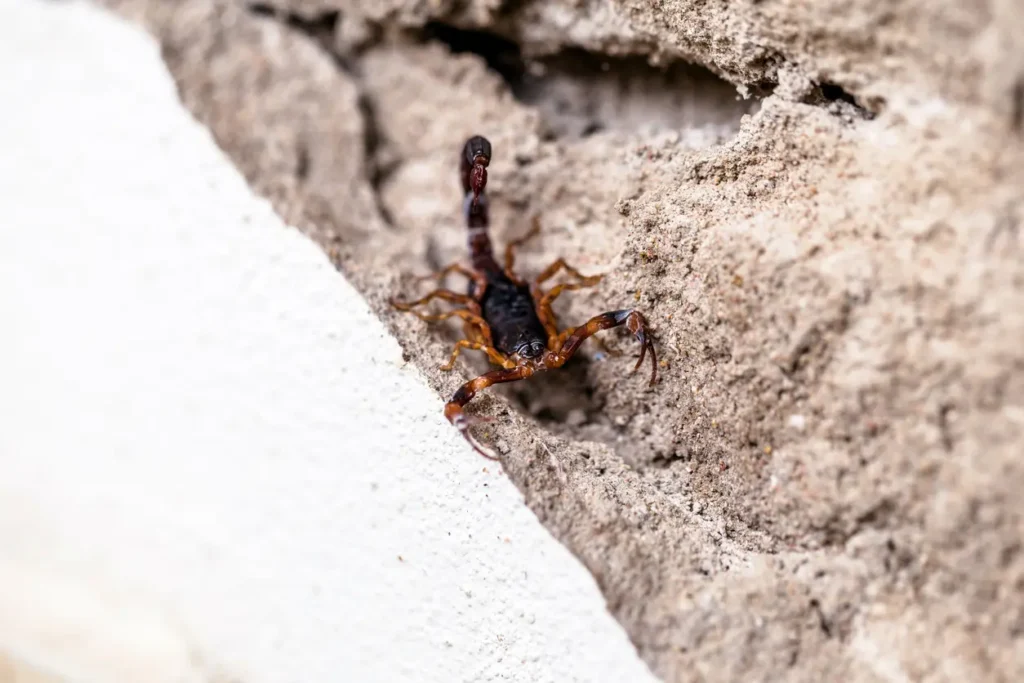
How to Check for Scorpions
Check with a UV flashlight at night—scorpions fluoresce under ultraviolet light. Move slowly and wear closed-toe shoes and gloves.
- Inspect crawl-space doors, porch steps, and lattice seams.
- Scan baseboards, closets, and under-sink cabinets inside.
- Check stacked wood, patio edges, and stored items outside.
Never pick up a live scorpion with bare hands. If collection is necessary, use tweezers and a sealed container. For stings, wash the site, apply a cold pack, and seek medical attention if symptoms worsen.
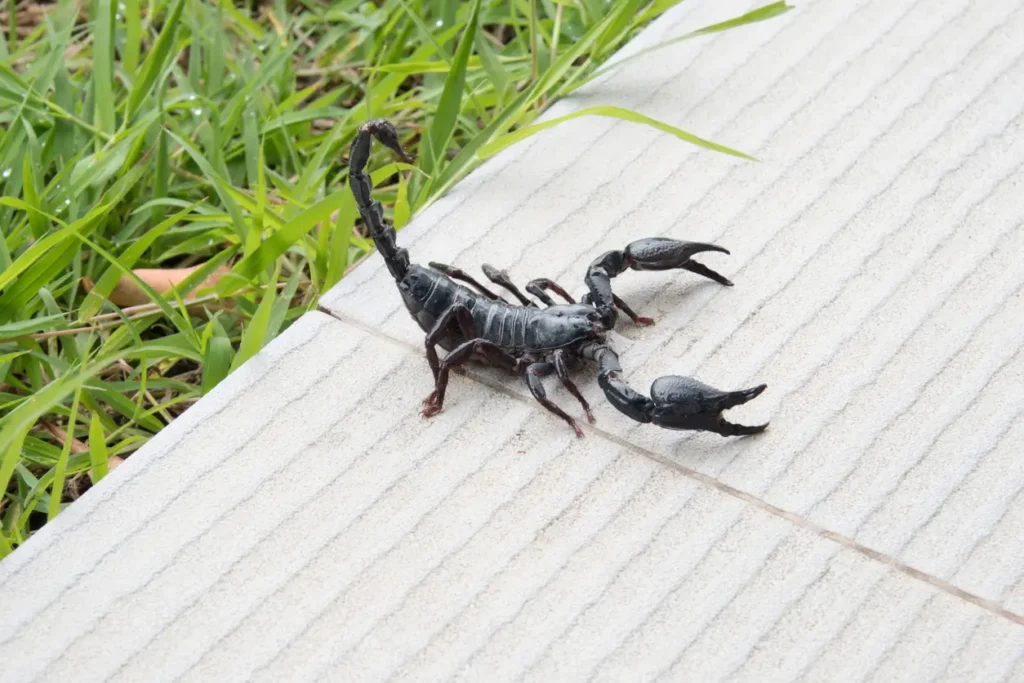
Types of Scorpions in Mt. Pleasant, SC
Southern Devil (Unstriped) Scorpion
The most common species in Mt. Pleasant. Usually small to medium in size, they favor crawl-space edges, under debris, and tight structural gaps.
Occasional Hitchhikers (Transported Species)
Other scorpions may arrive through shipments, travel, or landscaping. Correct ID guides the right treatments and follow-up.
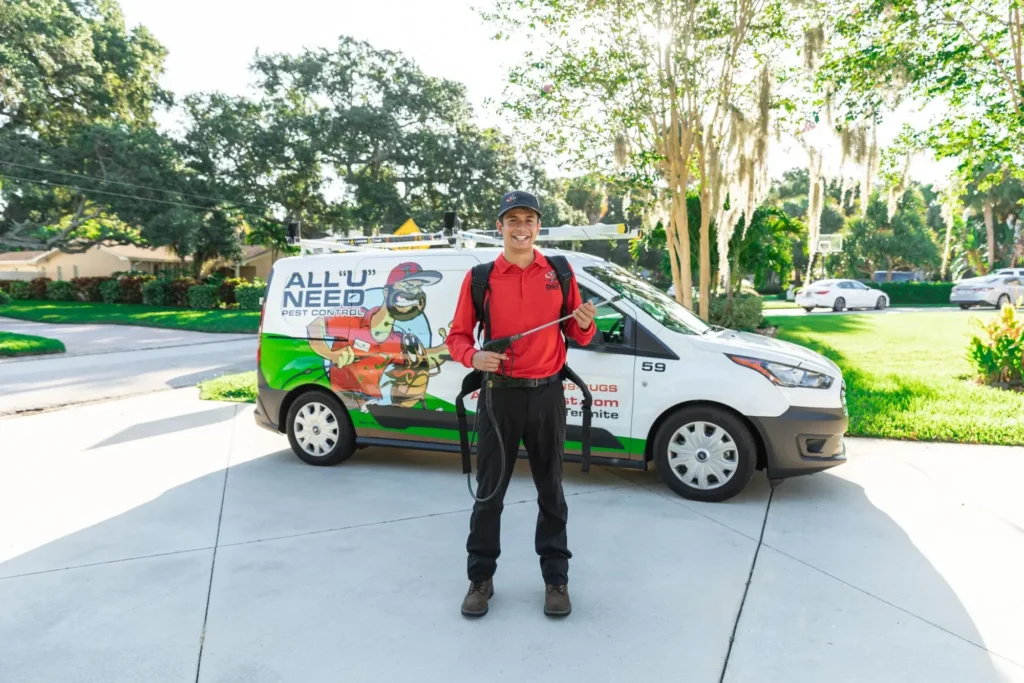
Scorpion Prevention in Mt. Pleasant, SC
Simple steps keep scorpion pressure low throughout the year.
- Seal the shell. Install sweeps, weatherstripping, and caulk; close utility entries with mesh and sealant; screen vents; and fit breathable weep-hole inserts.
- Reduce harborage. Elevate stored items, trim shrubs, keep woodpiles off the ground, and pull mulch back from siding.
- Dry the perimeter. Extend downspouts, repair gutters, improve grading, and ventilate crawl spaces.
- Dim the draw. Use warmer porch bulbs and reposition bright lights away from doors to reduce insect activity.
- Control other pests. Lowering roach, cricket, and insect numbers removes scorpion food sources.
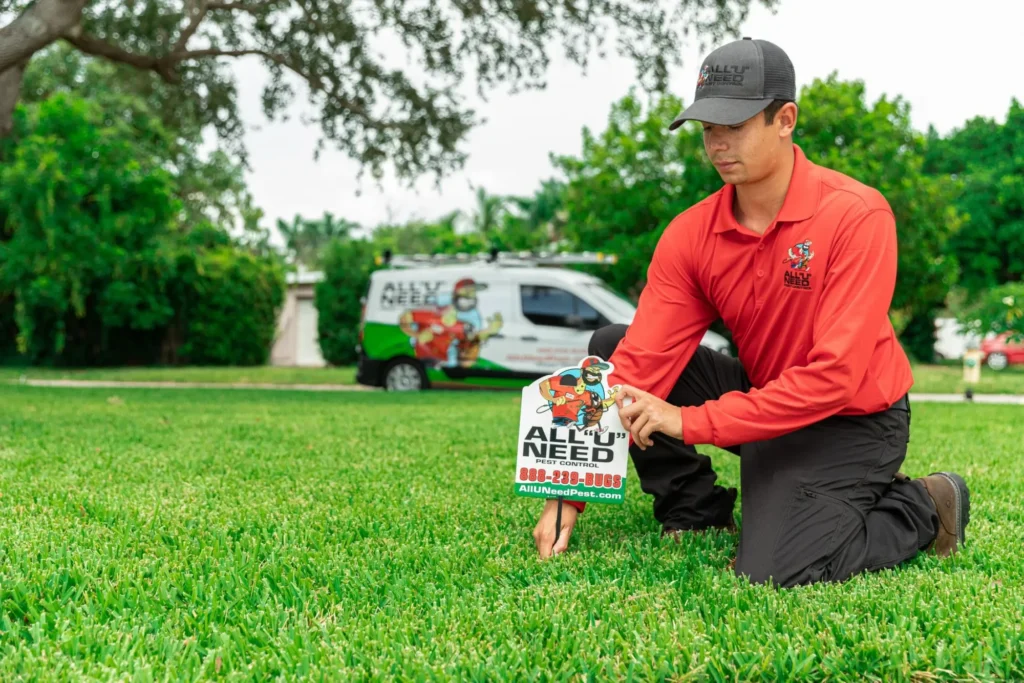
Choose All U Need Pest Control for Scorpion Prevention in Mt. Pleasant, SC
Scorpions don’t have to be part of life in Mt. Pleasant. All U Need Pest Control delivers a city-specific plan—precise treatments, lasting exclusion, and practical moisture and landscape adjustments that make your home unappealing to pests. You’ll receive clear pricing, step-by-step prep guidance, and fast results. And if activity persists, we’ll return until your home is comfortable again.
Call 1 (888) 239-BUGS or contact us online for a free inspection. We’ll inspect, eliminate, and protect—so you can enjoy boating on Shem Creek, oyster roasts, Wando High football games, and neighborhood gatherings without worrying about scorpions.
Location Contact:
419 N Cedar St Summerville, SC 29483
Get Directions for 419 N Cedar StSummerville, SC 29483 on Google Maps843-489-8818
Call All "U" Need Pest Control